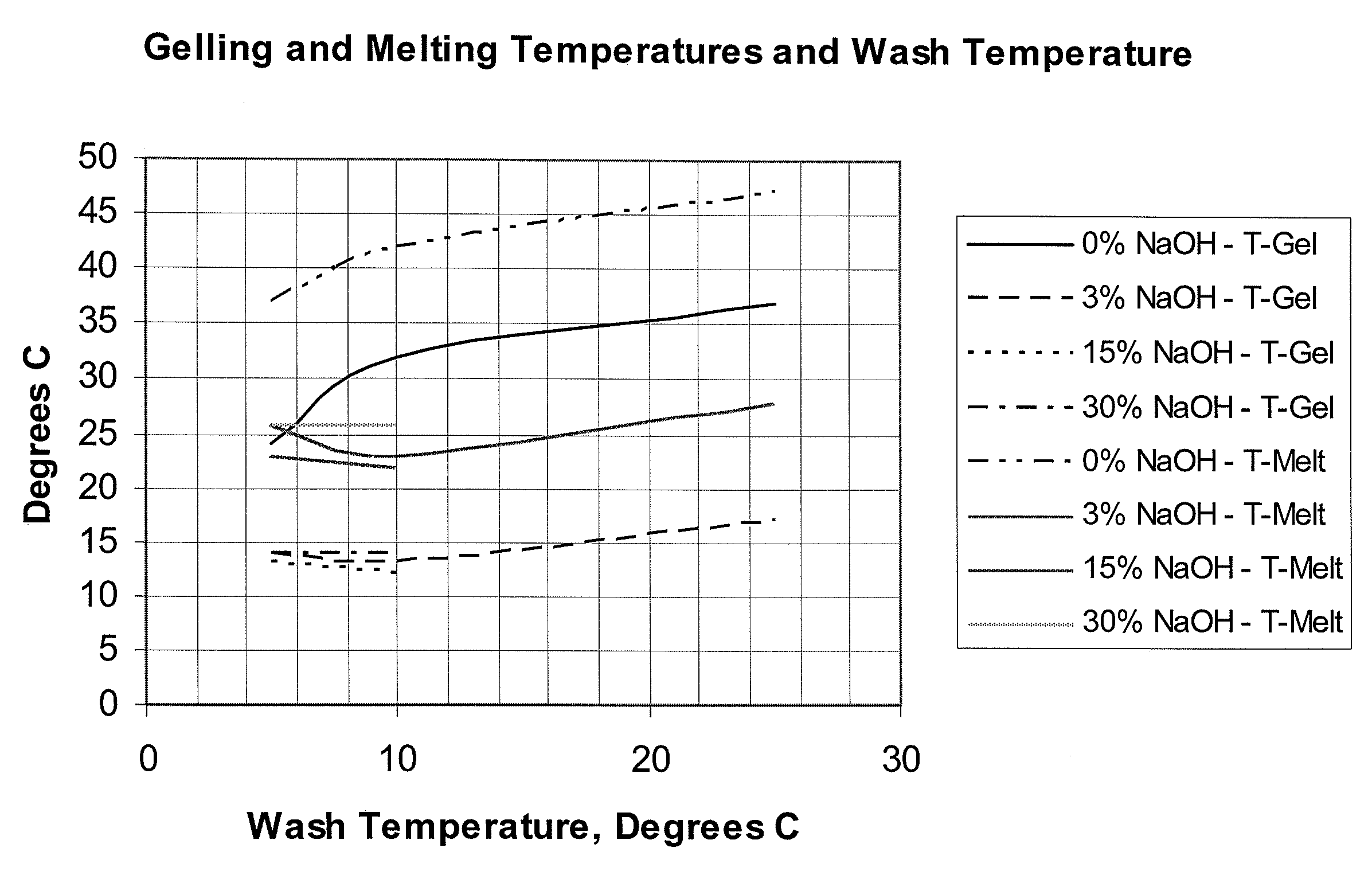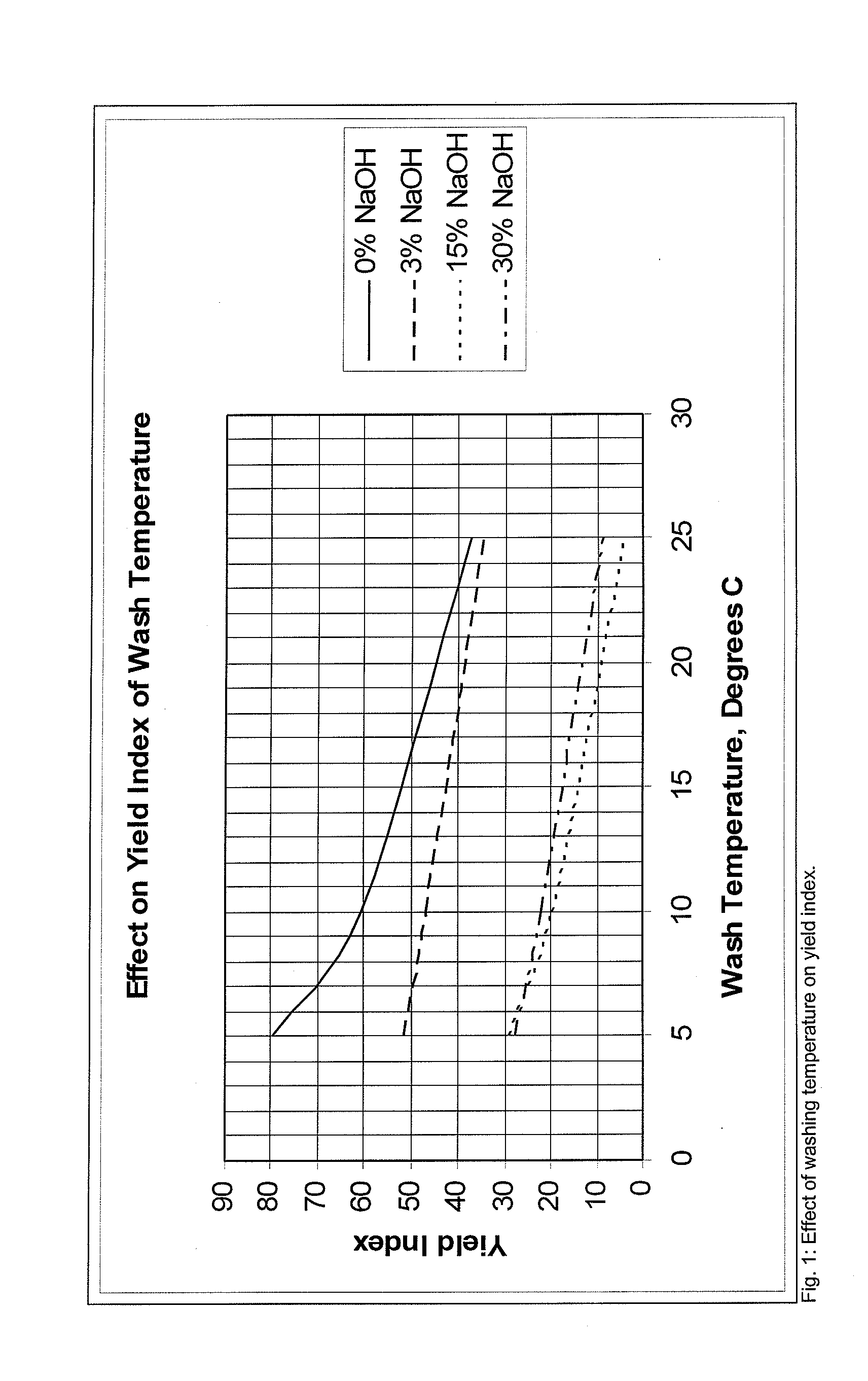Carrageenan and Carrageenan-Containing Products
a carrageenan and carrageenan technology, applied in the direction of heterocyclic compound active ingredients, plant/algae/fungi/lichens ingredients, biocide, etc., can solve the problems of inability to further reduce the melting temperature of compositions containing carrageenans, and the extent to which the gelling cation level can be reduced is limited
- Summary
- Abstract
- Description
- Claims
- Application Information
AI Technical Summary
Benefits of technology
Problems solved by technology
Method used
Image
Examples
first embodiment
(a) Second Step, First Embodiment
[0058]In the first embodiment, the second step is a treatment of the cleaned seaweed with an aqueous treatment solution containing alkali in water. The alkali provides cations, which exclude potassium, calcium and / or magnesium in the carrageenan, while the concentration of the alkali in the treatment solution is held sufficiently high to reduce the aqueous solubility of the carrageenan thus preventing it from leaching out of the seaweed and dissolving into the water during this and subsequent steps.
[0059]Accordingly, by treating the carrageenan-containing seaweed in this way, the carrageenan is depleted from its gelling cat ions in situ.
[0060]Preferred alkalis are sodium hydroxide and its corresponding carbonates and bicarbonates, with sodium hydroxide being the most preferred. Sodium hydroxide is particularly notable for reducing the gelling and melting temperatures of carrageenan. Also suitable is calcium hydroxide. As discussed above, the concentr...
second embodiment
(b) Second Step, Second Embodiment
[0064]In a second embodiment of the present invention, the second step is a treatment of the washed seaweed with an aqueous treatment solution containing a sodium salt. The effect is similar as described above with respect to the first embodiment where the sodium salt provides monovalent cations to prevent the diffusion of potassium, calcium and magnesium ions into the carrageenan while the concentration of the sodium salt in the treatment solution is held sufficiently high to reduce the aqueous solubility of the carrageenan thus reducing its leaching out from seaweed and dissolution into water. Thus similarly as above, by treating the carrageenan-containing seaweed in this way, the carrageenan is depleted from its gelling cat ions in situ.
[0065]Sodium salts include, but are not limited to sodium chloride, sodium sulphate, sodium phosphate, sodium tri polyphosphate and sodium hexametaphosphate. The concentration of sodium salt in the water phase is ...
third embodiment
(C) Second Step, Third Embodiment
[0069]In a third embodiment of the present invention, this second step is essentially
[0070]split, into three substeps which include a first substep of treating the washed seaweed with a first aqueous treatment solution containing about 3-30 wt %, preferably 10-25 wt %, and most preferably 15-20 wt %, of a first treatment compound, a second substep of washing or rinsing the treated seaweed to remove excess of the first treatment compound, and a third substep of treating the washed seaweed with a second aqueous treatment solution containing about 3-30 wt %, preferably 10-25 wt %, and most preferably 15-20 wt %, of a second treatment compound. (For purposes of clarity, exactness and completeness to persons of ordinary skill in the art. these substeps are referred to as separate processing steps in the claims).
[0071]The third embodiment can thus be practiced in two subembodiments. In the first subembodiment, the first treatment compound is an alkali, and...
PUM
| Property | Measurement | Unit |
|---|---|---|
| Temperature | aaaaa | aaaaa |
| Temperature | aaaaa | aaaaa |
| Temperature | aaaaa | aaaaa |
Abstract
Description
Claims
Application Information
 Login to View More
Login to View More - R&D
- Intellectual Property
- Life Sciences
- Materials
- Tech Scout
- Unparalleled Data Quality
- Higher Quality Content
- 60% Fewer Hallucinations
Browse by: Latest US Patents, China's latest patents, Technical Efficacy Thesaurus, Application Domain, Technology Topic, Popular Technical Reports.
© 2025 PatSnap. All rights reserved.Legal|Privacy policy|Modern Slavery Act Transparency Statement|Sitemap|About US| Contact US: help@patsnap.com



